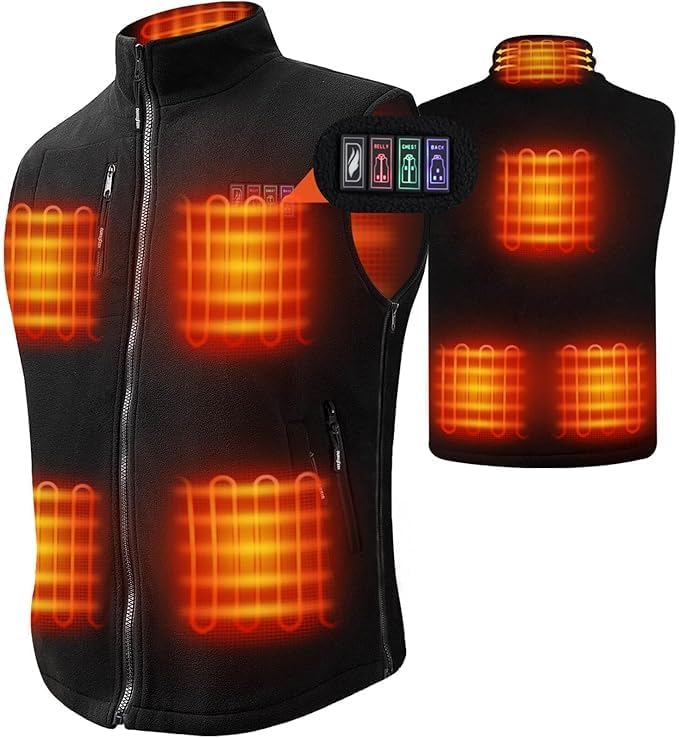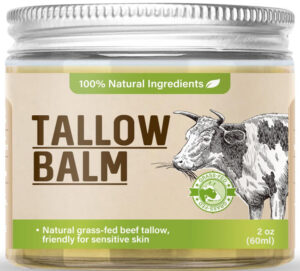No products in the cart.
No products in the cart.
Winter has a way of creeping into your bones, doesn’t it? But cranking up the heat isn’t always the answer. Keeping warm doesn’t have to mean heating your entire home—it’s often easier (and cheaper) to focus on warming yourself instead. From layering up to using simple tricks to trap body heat, there are plenty of ways to stay cozy without skyrocketing your energy bills. Let’s make winter a bit more bearable, one warm moment at a time.
When it comes to staying cozy in cold weather, it’s more about working with your body than fighting the chill. Understanding how your body makes and keeps heat is the first step to staying warm, no matter the temperature outside. Let’s break it down.
Your body is like a little furnace, always working to keep you warm enough to function. This process is called thermogenesis—it’s how your body produces heat. It’s a natural response to the cold, and it happens in a few ways:
Of course, the amount of heat your body can generate depends on factors like your age, body size, and overall health. And while your body does its best, it needs a bit of help to hold on to that precious heat.
Keeping warm isn’t just about making heat—it’s about trapping it where it counts. That’s where insulation comes in. Think of insulation as a barrier between you and the cold. It keeps the heat your body makes from slipping away.
Here’s how it works:
And let’s not forget, shelter counts as insulation too. Whether it’s a windproof jacket or a warm sleeping bag when you’re camping, having something between you and the cold can make all the difference.
By understanding how your body creates heat and how to keep it from escaping, you can stay warm without relying on cranking up the thermostat.
When the temperature drops, being outdoors can feel like a battle against the cold. But with the right strategies, you can stay warm and actually enjoy being outside, whether you’re walking the dog, running errands, or exploring nature. It’s all about preparing smartly and knowing how to keep your body heat in check.
Layering isn’t just practical—it’s the key to keeping warm when you’re outside. Think of it as building a shield against the chill. Each layer has a job, and when you combine them, they work together to trap heat.
Start with a base layer that wicks moisture away from your skin. Sweat can cool you down fast, so go for something like synthetic fabrics or merino wool. Avoid cotton—it holds moisture and will leave you feeling clammy.
Next, add a middle layer for insulation. This is your warmth layer, and fleece or down works great here. These materials trap body heat in tiny air pockets, making them excellent insulators.
Finally, finish with an outer layer to block wind and water. A good windproof or waterproof shell locks in your warmth while keeping the elements out. And don’t forget the details: a hat, scarf, gloves, and warm socks can make or break your comfort. Up to 10% of your body heat escapes through your head, so cover it up!
Cold fingertips and toes are the worst, right? That’s where heat packs and hand warmers save the day. These little wonders are easy to use and incredibly effective for keeping warm.
Pop a pair of hand warmers into your gloves or pockets before you head outside. They provide several hours of steady heat, which is perfect for long walks or outdoor events. There are also adhesive heat packs designed for your back or other areas that need extra warmth—ideal if you’re standing still in freezing weather.
Pro tip: Slip a heat pack into your boots or shoes to keep your toes toasty. Just make sure you’re wearing thick socks to cushion the heat and avoid discomfort. Reusable packs are a great eco-friendly option, and they’re easy to recharge by boiling them for a few minutes.
The easiest way to warm up outside? Keep moving. Your body is like a furnace—it generates heat when your muscles are working. Even a brisk walk can make a big difference in how warm you feel.
Try incorporating small bursts of activity if you’re staying in one place, like stretching or jogging in place. If you’re walking the dog, pick up the pace for a block or two. Movement gets your blood flowing to your hands and feet, which helps prevent that stiff, frozen feeling.
But don’t overdo it—you don’t want to get sweaty and end up chilled. It’s about balancing movement with staying dry and comfortable. If you’re on a winter hike or walk, take breaks to adjust layers and regulate your temperature.
With the right combination of layers, some handy heat boosters, and staying active, you’ll be well on your way to staying warm outdoors, no matter how low the temperature drops.
Winter doesn’t have to mean shivering on the couch or layering up so much you can barely move. Staying warm indoors can be easy, cozy, and even enjoyable if you focus on heating yourself instead of your whole home. Here’s how I stay comfortable when temperatures drop, and how you can too.
There’s something magical about wrapping yourself up in a soft, warm blanket on a cold day. Blankets and throws are some of the simplest ways to keep warm without touching the thermostat. I like to keep a few on hand in different rooms—on the couch, at the foot of my bed, even draped over my desk chair. It’s like giving yourself a portable hug whenever you need one.
When you’re relaxing, grab a heavier throw blanket made of materials like fleece or wool. They trap warmth effectively and feel luxurious against your skin. If you’re sitting still for long periods, go for blankets with thicker layers or even a sherpa lining—perfect for reading a book or catching up on your favorite show.
Bonus tip: Layer your blankets just like you would your clothes. A lighter one underneath and a thicker one on top can work wonders. And don’t forget about heated blankets! They’re an amazing option if you want to feel like you’re lying in a cocoon of warmth.
Let me tell you, getting a heated body warmer was a complete game-changer for how I stay warm while working in my studio. Instead of trying to heat up an entire room, which can be a waste of energy and money, I just keep myself warm—and it’s a win for both comfort and my utility bill.
A heated body warmer works by directly warming your core, where it matters most. Whether I’m sitting at my desk or staying still for long stretches, I feel completely cozy without ever needing to reach for a space heater. Most models are lightweight and rechargeable, making them easy to wear around the house or even outdoors.
Here’s why I can’t recommend them enough:
Wearing one is like carrying your own personal heat bubble. I love that I stay warm, no matter how frosty it gets. Plus, with all the money I save on heating bills, it feels like a win-win. If you haven’t tried one yet, seriously, what are you waiting for?
Staying warm doesn’t have to mean blasting the heat 24/7. Small, thoughtful changes like these can keep you toasty and comfortable all winter long.

CLICK HERE to check out the review for heated body warmers
It might surprise you how much what you eat and drink affects your body temperature. Your body works like a well-tuned machine, turning food and drink into fuel. When the right fuel is used, it can help you stay warm from the inside out. Let’s dive into how you can use nutrition and hydration to generate and maintain body heat during cold winter months.
Ever notice how a steaming bowl of soup can feel like a hug on a cold day? That’s because warm foods and drinks don’t just make your taste buds happy—they actually help raise your core temperature. Think of them as a kind of internal insulation, giving you both warmth and comfort where it matters most.
Here are some ideal options to keep you cozy:
It’s also a good idea to eat regularly throughout the day. Your body uses calories to generate heat, so skipping meals can leave you feeling colder and more sluggish. Treat food as fuel, and you’ll be better equipped to take on the chill.
Hydration isn’t just a summer concern—it’s just as important in the winter. Your body needs water for countless functions, including maintaining a stable temperature. When you’re even slightly dehydrated, it’s harder for your body to regulate heat, leaving you feeling colder than you should.
Cold weather tends to mask our thirst, so it’s easy to forget to drink water. Plus, dry indoor air and chilly winds outside can dehydrate you faster than you might think. Here’s how to make sure you’re getting enough fluids during winter:
Hydration is like oil for a machine—it keeps your body’s processes running smoothly. Without it, your circulation slows down, and your extremities can feel icy, no matter how many layers you’re wearing. Stay mindful of your fluid intake, and you’ll find it much easier to keep warm throughout the day.
By focusing on what you eat and drink, you can give your body the tools it needs to produce and retain heat. Plus, who doesn’t want an excuse to sip more tea or enjoy a hearty, comforting meal?
Staying warm in winter isn’t just about comfort—it’s about staying safe too. Cold weather can take a serious toll on your body if you’re not prepared. Knowing how to protect yourself, especially when temperatures plunge, can prevent health risks and keep you feeling your best. Let’s talk about two important areas: recognizing signs of hypothermia and keeping your extremities warm.
Hypothermia happens when your body loses heat faster than it can produce it, leading to a dangerously low body temperature. It’s not just something that happens to mountaineers or stranded hikers—it can sneak up on anyone exposed to cold weather for too long. Recognizing the symptoms early could save your life or someone else’s.
Here are the most common symptoms to look out for:
If you or someone else shows these symptoms, act quickly:
Paying close attention to these signs is especially important for the elderly and very young, as their bodies don’t regulate heat as well. When in doubt, it’s better to take precautions than risk a serious health scare.
Your hands, feet, and head are like escape hatches for body heat. If you don’t keep them covered, staying warm can feel almost impossible. Have you ever felt like your fingers or toes were freezing while the rest of you was fine? That’s because your body prioritizes warming your core over your extremities, leaving those areas colder.
Here’s how to keep those vulnerable spots protected:
Think of these tips like armor against the cold. By keeping your extremities warm, you’re helping your whole body stay comfortable and protected during winter’s chilliest days.
Staying warm in winter doesn’t have to mean heating your entire house. It’s about being smart and focusing on keeping yourself cozy and comfortable. Layers, warm foods, staying active, and even a trusty blanket can make all the difference. Little changes go a long way.
Try out these tips and see what works best for you. Share your own favourite ways to keep warm—let’s make winter a little less bitter together!
If you need any further information or assistance with this article, don’t hesitate to Contact Us
Karen Blake
BAHN-NLP
TFT-DX



